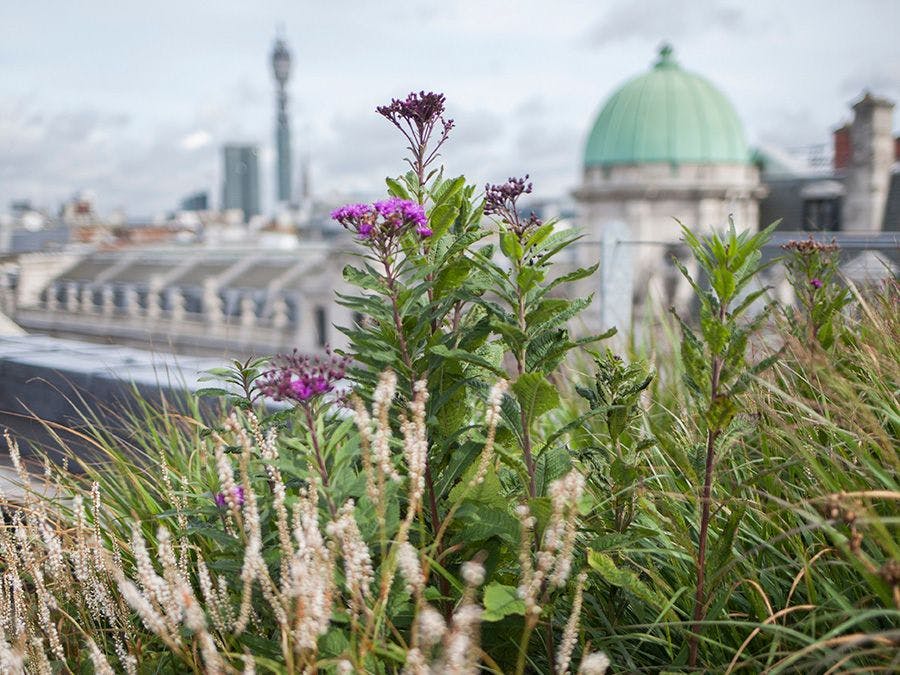
What is rewilding?
In essence, rewilding is bringing the rhythm of nature back into your gardening process. It involves finding a healthy balance between creating a garden and giving nature a hand in restoring land to its natural habitat by introducing native plants and natural environments. Rewilding is not just a far-fetched idea; it also offers ecological benefits. It enhances biodiversity and can create a self-sustainable ecosystem within your own backyard, contributing to the reduction of climate change.
Wildflowers are a perfect option to bring biodiversity back to your garden.
"Rewilding a garden is about focusing on ecological results – to establish a mosaic of habitats to restore a patch of land.”
So, here are nine simple ideas to rewild your garden and prepare it for ample wildlife visitors.
Garden Trend: Plant Pollinators
Rewilding your garden is about attracting bees, butterflies, and other pollinators. Planting pollinators is the best way to achieve this. From early-blooming borage to classic lavender, salvias to Gaura—anything that can provide nourishment for pollinators throughout the growing seasons will help improve your garden's natural ecosystem.
Gaura is a great option for pollinators - long flowering and ample flowers.
Garden Trend: Add Natural Habitats
Promoting the return of natural wildlife involves providing nesting spots for them. Install nesting boxes, create woodland-style bug hotels, hedgehog holes, or even a pond to encourage wildlife to stay in your garden.
Garden Trend: Mow Lawns Less
Traditional lawns, known as monocultures, do not support a diverse variety of natural life. By leaving your grass to grow long or introducing wildflower meadows, you can bring wildlife back to your garden. Be cautious when cutting back the grass to avoid harming hedgehogs or other wildlife that may be hiding within it.
Garden Trend: Plant Wildflowers
Wildflower meadows are visually pleasing and bring a touch of rewilding to your garden. Use wildflower mixes that offer a diverse variety of pollen-rich annuals to promote the biodiversity of visiting pollinators and their predators. Wildflowers are drought-tolerant and low-maintenance, making them a great option for garden banks or borders.
Garden Trend: Grow Creepers on Walls or Fencing
While natural hedges are ideal, they can take years to mature and may not be feasible in urban environments. Planting creepers along garden fences or walls allows you to embrace rewilding. Consider using eco-friendly exterior paint to give your fence a green and natural feel.
Garden Trend: Swap Chemicals for Organic Methods
One of the best things you can do is replace chemical pesticides with organic alternatives. Try wool around plants, vaseline on the edges of pots, and even table salt can be used to keep pests away from your garden.
Garden Trend: Create a Water Source
Building a pond attracts a wide range of biodiversity, from frogs to dragonflies and birds. If a pond is not feasible, a birdbath or small water feature can still provide a source of water for wildlife. You'll be amazed at the variety of creatures that will congregate and drink from it.
Garden Trend: Entrances and Exits
Talk to your neighbour and create corridors for hedgehogs to move freely between gardens. This helps connect habitats and allows wildlife to roam and explore.
Garden Trend: Feed Your Soil
Healthy soil is the foundation of a biodiverse garden. Top borders and bare earth with a deep mulch of organic matter in autumn or spring to increase soil health. If you have space, create your own compost spot to enrich your garden naturally.
By bringing together these rewilding ideas into your garden, you can not only bring a naturally pleasing look to your outdoor space but also know you are playing a part in restoring natural habitats, made even more pleasing as you see wildlife return to your garden and make it come alive.